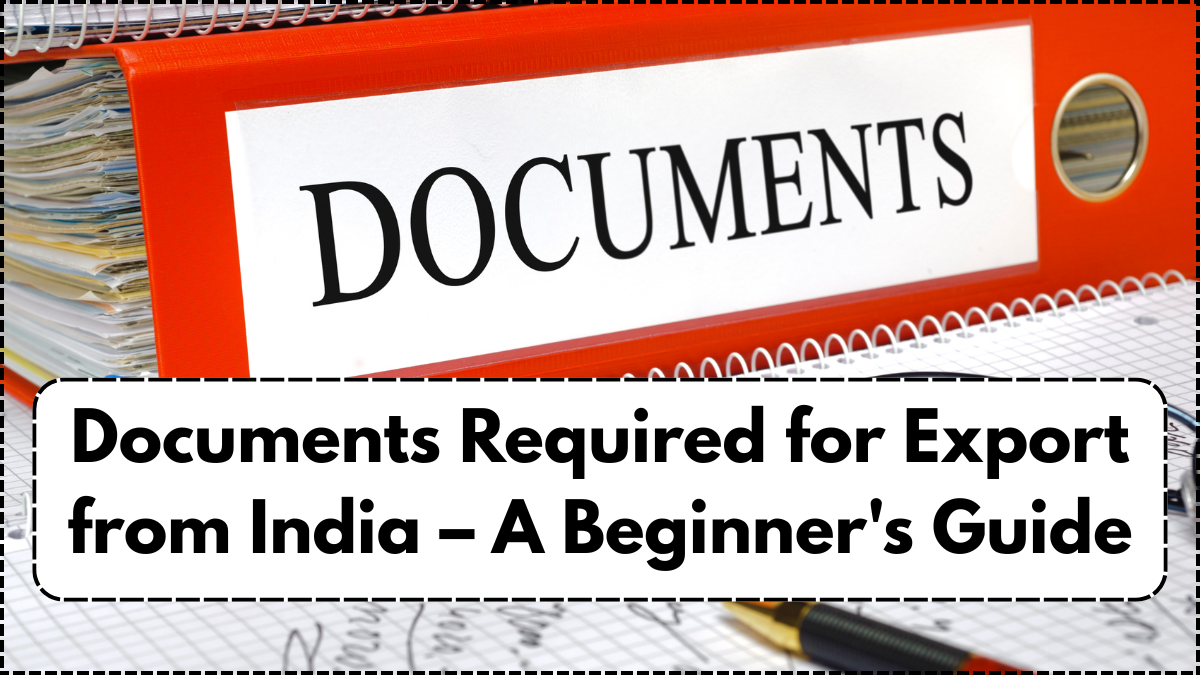Venturing into the world of international trade can be rewarding, but only if you get the documentation right. In June 2025, Indian exporters face stricter compliance and documentation scrutiny globally, making it critical for first-time exporters to understand the complete list of required documents for export from India. Whether you’re shipping textiles, machinery, or processed foods, a misstep in your shipping documents could mean delays, penalties, or shipment rejections. Here’s everything a beginner needs to know to move goods smoothly across borders.

What Are the Mandatory Documents for Export from India?
For most exports from India, there is a basic documentation set that applies across product types. This includes:
| Document Type | Purpose | Issuing Authority |
|---|---|---|
| Import Export Code (IEC) | Acts as your business’s passport for international trade | DGFT (Directorate General of Foreign Trade) |
| Commercial Invoice | Establishes the sale value and description of goods | Exporter |
| Packing List | Details quantity, weight, and packaging of items | Exporter |
| Shipping Bill | Key document required by Indian Customs | Filed electronically via ICEGATE |
| Bill of Lading/Airway Bill | Confirms carrier receipt and outlines delivery contract | Shipping Line / Airline |
| Certificate of Origin | Proves goods’ country of origin for trade benefits | Chamber of Commerce |
| Customs Papers | Supports clearance, valuation, and duty processing | Indian Customs Authorities |
Why the Import Export Code (IEC) Is Your First Step
No exporter can operate legally without obtaining an IEC, which is a 10-digit code issued by DGFT. This is the first official approval that identifies your business as an exporter. As of June 2025, DGFT has made it mandatory for all IECs to be digitally verified and linked to PAN and Aadhaar for enhanced traceability and compliance.
Pro tip: Apply for your IEC through the official DGFT portal. The application process is entirely online and usually takes 1-2 working days post-verification.
Shipping Documents: Accuracy Is Everything
Exporters must prepare shipping documents meticulously. These serve as proof for logistics providers, customs, and foreign buyers. For instance, the commercial invoice not only lists the sale value but also includes HS code, terms of sale (Incoterms), and currency. Errors in HS codes or declared value can lead to penalties during customs checks.
Additionally, your packing list should reflect the actual physical shipment. In 2025, with increasing reliance on AI-driven inspections, mismatches between declared and scanned quantities can trigger red flags.
Customs Papers: Prepare for Digital Clearance
In line with India’s push toward a paperless economy, customs papers now must be uploaded digitally via ICEGATE, India’s Customs Electronic Gateway. These include the shipping bill, export duty receipts (if any), and clearance certificates. All electronic documents must carry a valid digital signature.
Ensure your Electronic Bank Realization Certificate (e-BRC) is updated to facilitate faster GST refunds and duty drawback processing.
Common Mistakes Beginners Make (and How to Avoid Them)
- Incorrect IEC details – Double-check name, PAN linkage, and registration date.
- Inaccurate HS codes – Use the WCO Harmonized System tool or consult a freight forwarder.
- Omitting Incoterms on invoices – These define liability and risk; essential in 2025’s tighter global insurance norms.
- Manual paperwork – Always digitize. Indian customs now prioritize digital submissions.
- No Certificate of Origin – Many FTAs (Free Trade Agreements) require this for reduced tariffs.
Conclusion: Mastering Documentation Is Key to Export Success
While the paperwork might seem overwhelming at first, getting familiar with the key documents for export from India sets you up for smooth trade operations. As of mid-2025, the focus is shifting toward real-time compliance, automation, and electronic validation—making accuracy, speed, and digital readiness your biggest assets.
Start by securing your IEC, ensure all shipping documents are accurate, and stay updated with customs regulations. With preparation and precision, even beginners can navigate India’s export system confidently.
FAQs About Export Documentation in India
What is the IEC and why is it necessary for export?
The Import Export Code (IEC) is a mandatory 10-digit registration number that legally allows Indian businesses to export goods or services. It is issued by the DGFT and required for customs clearance and banking transactions.
Do I need different documents for air and sea shipments?
While core documents like the commercial invoice and packing list remain the same, transportation documents differ. You’ll need an Airway Bill for air cargo and a Bill of Lading for sea freight.
Can I use one commercial invoice for multiple shipments?
No, each shipment must have its own commercial invoice reflecting accurate goods, quantity, and pricing details.
Are digital documents accepted by customs in India?
Yes, as of 2025, Indian Customs strongly encourages electronic documentation through ICEGATE with mandatory digital signatures.
How do I obtain a Certificate of Origin?
You can apply online via the DGFT portal or through authorized Chambers of Commerce. Some FTAs may require specific formats, so always verify the destination country’s requirements.
Click here to learn more